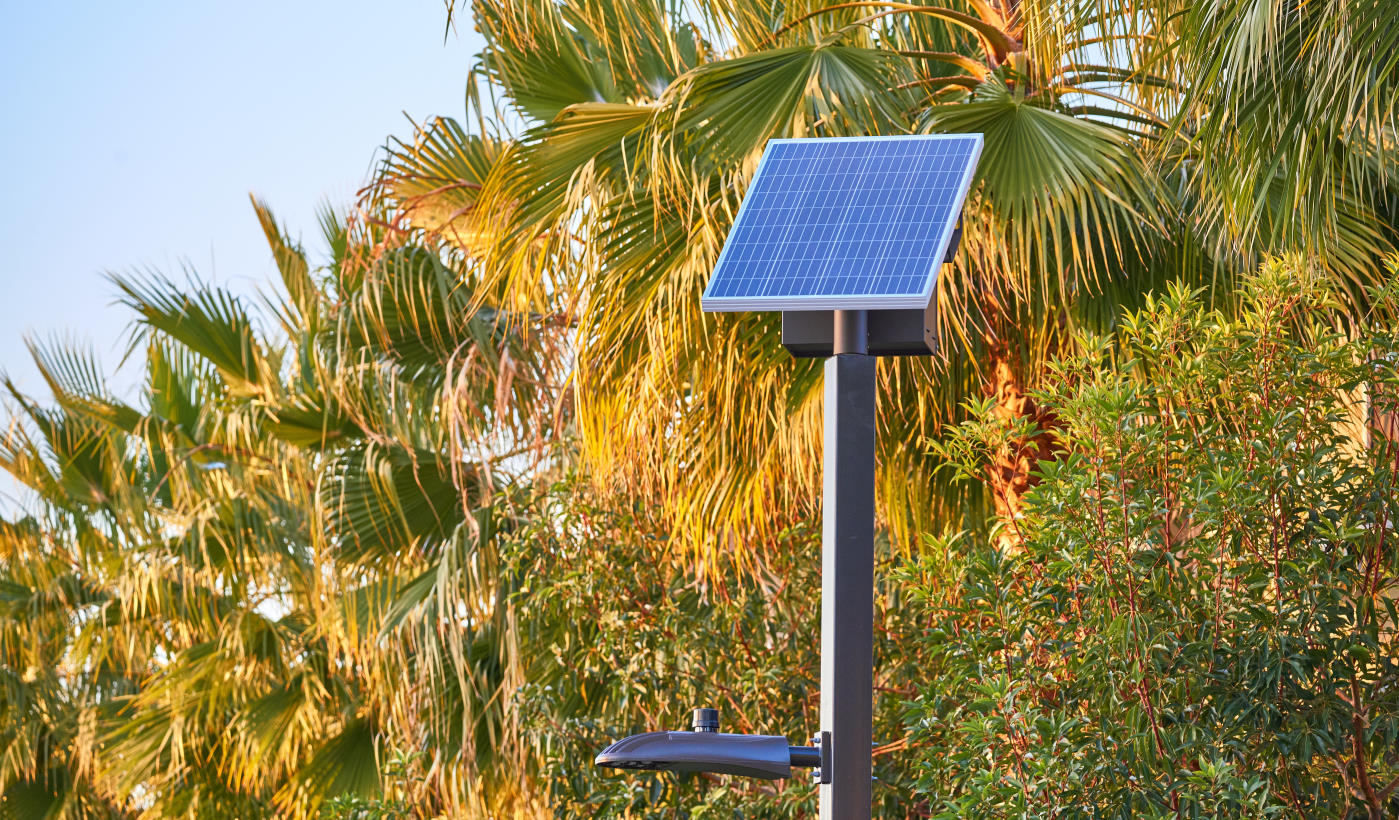
From pathways to parking lots to pickleball courts, solar lighting is transforming the way we illuminate outdoor spaces. A sustainable and increasingly affordable alternative to traditional lighting, solar lights are being deployed by cities and businesses across North America to enhance safety, reduce energy costs, and minimize carbon footprints.
But as word of their advantages spreads, so too do questions about their performance and functionality—especially when it comes to heat. What effect does temperature have on the performance of solar lighting systems? Are there locations that are too hot or too cold for solar lights? And even the seemingly simple but significant question: Do solar lights themselves generate heat?
In this article, we’ll delve into the science of how temperature affects solar lighting performance, and share our best practices for optimizing solar lights in different climates.
How Do Solar LEDs Work?
A solar LED system consists of three main components: a solar panel, a rechargeable battery, and an LED fixture. During the day, the solar panel collects sunlight and converts it into electrical energy, which is stored in the battery. At night, the stored energy powers the LED, producing light.
LEDs are highly efficient light sources compared to traditional incandescent bulbs. They generate light through a process called electroluminescence, where an electrical current passes through a semiconductor material, emitting photons. This process is far more energy-efficient and produces significantly less heat than traditional lighting methods.
Do Solar LEDs Produce Heat?
While solar LEDs do produce some heat, the amount is minimal compared to other types of lighting. Here’s why:
Does solar lighting work in all climates?
A common misconception is that solar lighting doesn’t work well in colder or cloudier climates. However, solar photovoltaic (PV) panels actually operate more efficiently in cooler temperatures. Unlike thermal solar technologies that rely on heat, PV panels generate electricity from light, meaning they can still perform well in northern locations with shorter days and cloud cover.
The key to reliable solar lighting in varying climates is proper system sizing. In areas with less sunlight, larger solar panels and higher-capacity batteries ensure consistent performance. Additionally, adjusting operating profiles—such as dimming lights during off-peak hours—can help conserve energy. Advances in LED and battery technology also contribute to solar lighting’s adaptability, making it a viable solution for nearly any location.
Solar lighting is a resilient, cost-effective solution for a wide range of environments. While temperature can influence system performance, proper design and component selection ensure that solar lights remain reliable in both extreme heat and cold. Whether in sunny Arizona or snowy Canada, modern solar lighting systems like Sol’s continue to illuminate spaces efficiently, sustainably, and affordably.
